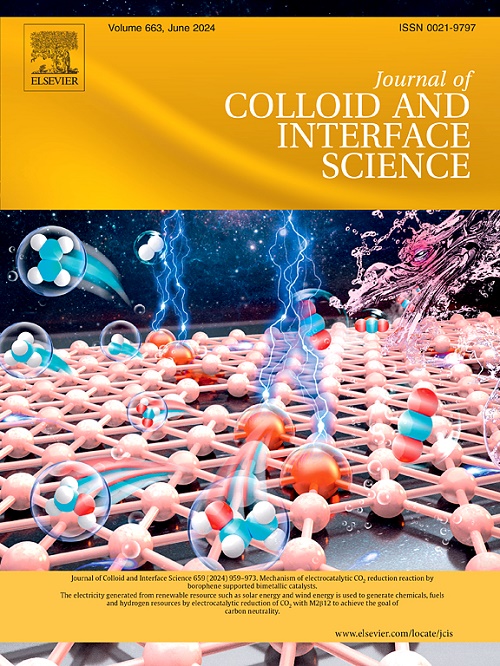纳米纤维Ru/SnO2异质结构作为高性能整体肼分裂和锌-肼电池的坚固双功能电催化剂。
IF 9.4
1区 化学
Q1 CHEMISTRY, PHYSICAL
引用次数: 0
摘要
水电解是一种绿色高效的制氢方法。然而,其阳极析氧反应(OER)半反应中的四电子转移过程限制了H2的生成速率。采用肼氧化反应(HzOR)代替OER制氢可以显著降低能耗。在这项研究中,我们成功地制备了一种纳米纤维Ru/SnO2异质结构,在析氢反应(HER)和HzOR中都表现出优异的性能。所获得的催化剂对HER只需要39 mV的过电位,对可逆氢电极(RHE)对HzOR只需要-0.076 V的极低电位,就能产生10 mA cm-2的电流密度。此外,在10 mA cm-1和100 mA cm-2的电流密度下,双电极整体肼分解(OHzS)电池的工作电压分别为0.026 V和0.292 V,明显低于整体水分解(OWS)过程。此外,在1.6 V电压下,它的H2产率为0.40 mmol h-1,是OWS的10倍。本研究为HER和HzOR的高效双功能催化剂的发展引入了一个突破性的概念,对解决能源短缺问题具有重要意义。本文章由计算机程序翻译,如有差异,请以英文原文为准。

Nanofibrous Ru/SnO2 heterostructure as robust bifunctional electrocatalyst for high-performance overall hydrazine splitting and Zn-hydrazine battery
Water electrolysis represents a green and efficient strategy for hydrogen (H2) production. However, the four-electron transfer process involved in its anodic oxygen evolution reaction (OER) half-reaction restricts the H2 generation rate. Employing hydrazine oxidation reaction (HzOR) as a substitute for OER in H2 generation can dramatically reduce energy consumption. In this study, we have successfully fabricated a nanofibrous Ru/SnO2 heterostructure that demonstrates exceptional performance in both hydrogen evolution reaction (HER) and HzOR. The obtained catalyst requires only a small overpotential of 39 mV for HER and an incredibly low potential of −0.076 V vs. reversible hydrogen electrode (RHE) for HzOR to generate the current density of 10 mA cm−2. Furthermore, the two-electrode overall hydrazine splitting (OHzS) cell operates at working voltages of 0.026 V and 0.292 V for the current densities of 10 mA cm−1 and 100 mA cm−2, respectively, notably lower than the overall water splitting (OWS) process. Moreover, it delivers a H2 yield rate of 0.40 mmol h−1 at a voltage of 1.6 V, outperforming the OWS by 10 times. This study introduces a groundbreaking concept in the advancement of highly efficient bifunctional catalysts for HER and HzOR, carrying significant implications for tackling energy scarcity issues.
求助全文
通过发布文献求助,成功后即可免费获取论文全文。
去求助
来源期刊
CiteScore
16.10
自引率
7.10%
发文量
2568
审稿时长
2 months
期刊介绍:
The Journal of Colloid and Interface Science publishes original research findings on the fundamental principles of colloid and interface science, as well as innovative applications in various fields. The criteria for publication include impact, quality, novelty, and originality.
Emphasis:
The journal emphasizes fundamental scientific innovation within the following categories:
A.Colloidal Materials and Nanomaterials
B.Soft Colloidal and Self-Assembly Systems
C.Adsorption, Catalysis, and Electrochemistry
D.Interfacial Processes, Capillarity, and Wetting
E.Biomaterials and Nanomedicine
F.Energy Conversion and Storage, and Environmental Technologies

 求助内容:
求助内容: 应助结果提醒方式:
应助结果提醒方式:


